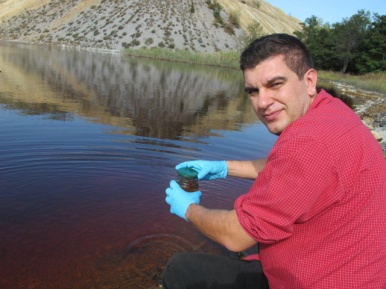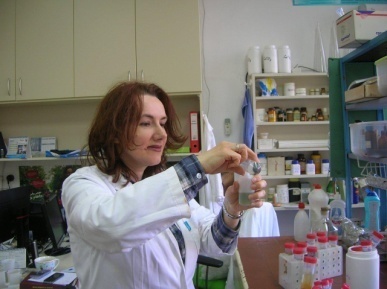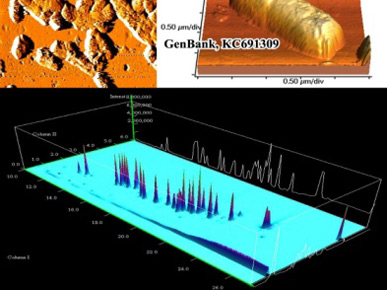We have established successful, long-term biochemistry and biotechnology research efforts in the areas of bioremediation, food biotechnology, biomaterials, and biofuels with the goal of environmental protection and obeying the principles of green chemistry, good engineering, and good biotechnology practices. We have participated in the design, development and marketing of several products declared winners of technological innovation challenges. Our research is organized within several areas:
Microbiological chemistry and biotechnology research is conducted by professors and researchers of the Department of Chemistry and Faculty of Chemistry – University of Belgrade. Research began with the late Professor Jovan Vučetić in 1964. Current principal investigator is Prof Dr. Miroslav M. Vrvić.
Research areas:
- isolation and characterization of microorganisms
- production and characterization of biologically active substances of microbial origin (antibiotics, polysaccharides, enzymes, biosurfactants)
- development of new infant formulas with special properties (bifidogenic effect, antioxidant activity)
- study and application of thionic bacteria acting on sulfide substrates
- biodegradation and biotransformation of oil carbohydrates and halogenated organic compounds
- application of bioremediation to eliminate toxic environmental pollutants
- ecotoxicology (Aliivibrio fisheri, Daphnia magna); biodegradability assays




Experimental biochemistry, enzymology and biotechnology research (principal investigator: Prof Vujčić) focuses on hydrolases and oxidoreductases and their applications in biotechnology. These enzymes are secreted naturally or obtained in recombinant form by genetically modifying fungi and bacteria. As hydrolases and oxidoreductases are the main enzyme classes in biomass processing, we focus on producing, purifying, characterizing and improving these enzymes, in order to achieve sustainable and balanced biomass conversion processes. Innovative enzymatic solutions improve on efficient biomass exploitation, and could enable a transition to a bio-based economy, by offering eco-friendly technologies for producing biofuels, valuable chemicals, and biomass-based materials. Discovery and characterization of new enzymes and enzymatic processes offers a foundation for developing enzymatic technologies to improve the use of renewable agro industrial and industrial waste resources.
Research areas:
- Bacillus licheniformis amylase digesting concentrated raw starch (a new development in the field of starch-based bio-ethanol production)
- Production of industrially important enzymes from Trichoderma and Aspergillus spp. for bio ethanol and nutritional fibers production
- Development of methods for identifying enzymes in mixtures of microbial origin
- Enzyme stabilization using protein engineering, immobilization on inert solid supports, and chemical modifications
- Tracking DNA-interactions of small molecules using spectrofluorimetric and electrophoretic techniques
- Study of laccases and peroxidases removing phenolic compounds and dyes from waste water; application in degradation of lignin
Prof. Radivoje Prodanović is the principal investigator for research in evolution of lignocellulitic enzymes, including cellobiose dehydrogenase, cellulases, and lignin and manganese peroxydases. Cellobiose dehydrogenase is an oxido-reductase participating in degradation of lignin components alongside lignin and manganese peroxidase. Cellulases degrade cellulose to cellobiose, a substrate for cellobiose dehydrogenase. Directed evolution of these enzymes to obtain mutants with increased substrate affinity and overall stability is our main goal. In addition, the research includes high-throughput screening and protein engineering.
Uros Andjelkovic's group was founded in 2023 at the Institute of Chemistry, Technology and Metallurgy. The group works in the newly established laboratory for protein biotechnology, proteomics and glycomics in cooperation with researchers from Serbia and abroad.
The major focus of the group:
- research and development to raise the level of technological readiness of Savalithsin - a new antiviral protein
- research and development of new methods of high-throughput analysis of early phase protein biomarkers in human blood
- introduction to the Serbian scientific community and promotion of proteomics technologies based on mass spectrometry with application in basic research and clinical practice, and high-throughput technologies of glycome analysis.
Savalithsin is a new protein that in vitro strongly inhibits HIV-1 and other pathogenic enveloped viruses HSV-1, HSV-2, Influenza A, SARS-CoV-2. Savalithsin is a broad-spectrum antiviral biologic drug candidate. It was discovered at ICTM and Faculty of Chemistry in cooperation with partners from Slovenia, Germany, Croatia and Montenegro. The technology for the application of Savalithsin as a topical antiviral microbicide is at an early stage. Research and development is aimed at raising the level of technological readiness including preclinical in vivo studies. The development of Savalithsin represents a pioneering attempt to develop a biological drug in Serbia. Savalithsin is the first biological drug candidate created as a result of scientific research in Serbia and protected by an international patent application. The patent application was accepted and published by WIPO in 2023. The technology is licensed to the spin-out company SavAntiVir.
We are developing strategies for the use of Savalithsin in the prevention and treatment of infections caused by sexually transmitted (HIV-1, HSV-1, and HSV-2) and respiratory (Influenza A and SARS-CoV-2) viruses, and viral zoonosis (Avian Influenza). We study the structure of Savalithsin and its interactions with viruses, cells, proteins and glycans.
Biomarkers - measurable indicators of physiological conditions, specific indicators of diseases and effects of pharmacological treatment are the basis of high-quality care for patients and personalized medicine. Blood is the most comprehensive sample most often used in diagnostics. Despite the enormous potential of protein biomarkers from blood, the number of newly introduced into clinical practice is only about 50 during the past 30 years. This data points to problems in protein biomarker discovery approaches, the current concept of protein biomarkers, technology and methods suitable for clinical monitoring of protein biomarkers.
The development of liquid chromatography and mass spectrometry technologies and proteomic approaches based on mass spectrometry paves the way for the analysis of a large number of proteins (1,000-10,000) in a short time (3-15 minutes) and meeting the conditions for introduction into wide clinical practice. The quality of the proteotype data we obtain from mass spectrometry analysis depends on the quality of sampling, the quality of sample preparation, and the quality of the specialist operating the nanoLC-MS/MS system. The complexity of the composition of blood plasma consists of: the number of proteins (over 10,000 proteins, estimated over 70,000 proteoforms), dynamic range (up to 12 orders of magnitude), and highly represented plasma proteins (20 proteins make up 96% of the protein mass of blood plasma). The distinction between physiological and pathophysiological conditions is reflected in the qualitative and quantitative profile of the proteotype, PPI, and the time dependence of the proteotype composition.
Together, technological and biological factors make finding early-stage protein biomarkers challenging. We are developing blood sample preparation strategies that will enable the detection of low abundance proteins and proteoforms. Strategies that differ from SISCAPA and CPLL. By applying new strategies in combination with liquid chromatographic systems connected to last-generation mass spectrometers, we explore the possibility to unlock the diagnostic potential hidden in low-represented blood proteins and a large number of published biomarker candidate proteins that are currently considered to have poor clinical performance (sensitivity and specificity ).


